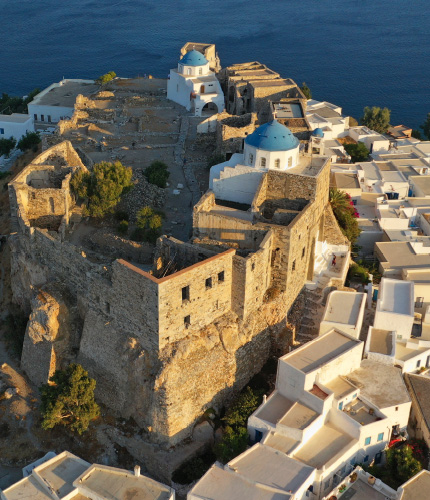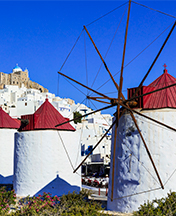According to Greek mythology, Astypalaia and Europe were daughters of Phoenix and Perimidis. The island of Astypalaia seems to have been inhabited for the first time in the 2nd millennium BC by the Carians, who came from the ancient region of Karia in Anatolia (today Turkey). The Minoans of Crete followed. Astypalaia seems to have been a rich place in the classical times, as shown by the high annual tax they paid in Athens. At that time there were many temples on the island, another symbol of prosperity. Fruit and flowers covered almost the whole island, which is why the ancient Greeks called it the Table of the Gods. During the Hellenistic period (4th-1st century BC), Astypalaia was an important naval base of Ptolemy of Egypt and remained as such until the Roman period, while the natural advantages of the island provided an excellent spot for the missions of the aristocratic navy against the pirates of the Mediterranean. During Byzantine times, (4th-13th century BC) the continuous attacks of the pirates forced the inhabitants to abandon their homes on the coast and create new settlements inside the island with the protection of the strong walls. At that time the castle of Agios Ioannis was built. The Venetians occupied the island of Astypalaia from 1207 to 1269, when it was handed back to the Byzantines. After the Fourth Crusade that almost destroyed Constantinople, the domination of Astypalaia passed to the noble Querini family of Venice who built the most important monument of this island. John Querini's family ruled the island of Astypalaia for 300 years and built several fortifications. The Venetians lost the island to the Turks in 1537. The period 1537-1912 was a climax for the history of Astypalaia, as the island enjoyed certain privileges that offered its inhabitants their autonomy. The island participated in the Greek revolution in 1821 but was still under Turkish rule. After its occupation by the Germans and the Italians, in 1948 it joined the Greek State.














